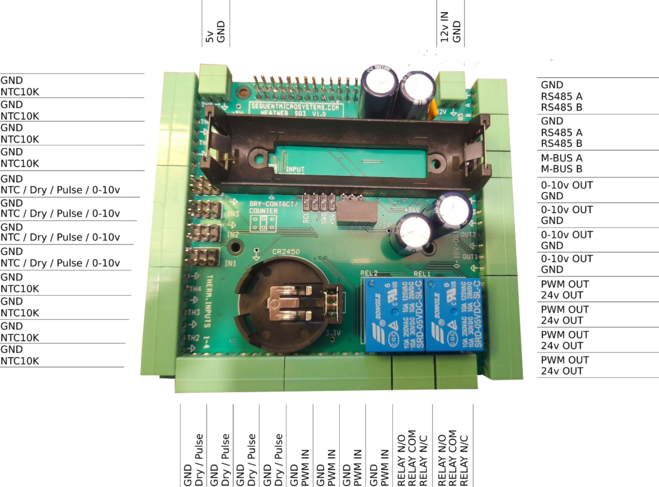Main Page
This is a new wiki site, started in May 2022, devoted to open source controls in the HVAC industry with a view to reducing carbon emissions.
Anyone can make use of the material on this site.
Collaboration on producing this site is open to anyone with related technical material to contribute. Please contact the admin with your intent, and please do not edit other people's work. Any additions that do not specifically contribute technical material related to lowering carbon may be removed without notice, as will any commercially sensitive material or advertising.
Purpose of this Wiki
- To provide instruction manuals for open source hardware and software
- To establish open standards for data labelling and communication
- To establish open standards for equipment control at a software level
- To record processes, procedures and software functions
- For the recording and dissemination of data from field trials related to open technologies and zero-carbon
- To store any media and data that is useful for open-source control
- To provide links to web sites including related GitHub projects
- To demonstrate and experiment with how a wiki can be used (alongside real-time data) to create feedback loop (between designers and users) to improve outcomes
- Saving carbon through collaboration
Creating new pages on this Wiki
When creating pages, please do so by first creating a link in the appropriate sections below, and then following the link to create the page. This ensures all pages are linked.
You create a link when editing by typing two consecutive opening square brackets... [[
Projects
| Project Title | Description | Author | Links |
|---|---|---|---|
| Specflue Training Centre Refit | Specflue run the UK's largest renewables training centre with lots of low carbon heat sources to be controlled. The project involves the upgrade of existing controls to use the new open controls standards. |
Rhg | |
Applications
Buffer & Thermal Store Controller
Every heating or hot water system that involves renewable energy requires storage, be it a hot water cylinder in a dwelling, or a buffer store in a heat network.
This application follows the current guidance, including CP1 Codes of Practice, and industry best practices, to deliver a buffer control solution.
Functions:
- Buffer and pipe temperature and pressure sensing
- Bivalent control with storage zoning
- Multiple store control with service mode
- Boiler (gas and biomass) and heat pump sequencing, rotation and modulation based on store depletion (as per CP1)
- Solar thermal control
- Overheat functions for biomass and solar systems
- Low storage override functions (shedding of non-critical loads)
- MQTT services, dashboards and remote monitoring
HIU Monitoring and Controls Refurbishment
Fan Coil Monitoring and Control
Hardware
The primary controls hardware used in this project is the Heatweb BEMS Hat for the Raspberry Pi (or BeagleBone).
This is a general purpose I/O board providing a full suite of inputs, outputs and communication buses for use in the HVAC industry. Combined with Node-RED the board offers a complete open-source controls solution for all common equipment.
The boards run from a 12v dc supply, generating 5v for the board, 24v for valves, and 36v for M-Bus, using on-board dc-dc converters backed up by a rechargeable battery for uninterrupted power supply. A coin cell is used to power a real-time clock.
The I/O includes:
- NTC or 0-10v temperature and pressure sensors
- Pulse flow sensors and meters
- Volt-free signals from relays
- Relay outputs
- PWM inputs and outputs for valves and pumps
- 0-10v outputs for pumps, valves and boilers
- RS485 for Modbus communications with pumps, boilers, HIUs and BMS systems
- M-Bus meter communications
WiFi, Ethernet and Bluetooth are provided by the Raspberry Pi board.
A number of the inputs are universal, and can be switched between NTC, 0-10v, or volt-free / pulse inputs (jumper selected). This ability to alter the hardware setup increases versatility significantly.
The addition of M-Bus allows us to connect to heat meters as standard, making the board a stand alone solution to open-sourcing meter data, and to use meter data within control logic.
The battery backup allows us to safely shut-down all valves and the controls when power is removed. This overcomes a common problem with HVAC systems, where valves typically remain open, destroying network performance.
Software
The following links relate to software used in projects on this wiki.
